
You know you’re in Mali when it’s too hot in the sun and come up with an electrified spit roast that will do the job for you.
As seen by our friend Mischel at campement Woloni in Sélingué, Mali. Thx!

You know you’re in Mali when it’s too hot in the sun and come up with an electrified spit roast that will do the job for you.
As seen by our friend Mischel at campement Woloni in Sélingué, Mali. Thx!
I have just spent a week in the field studying Masailand ecology and community conservation with Princeton University students. The location is not that remote (Kitengela and Olerai within 40 km of Nairobi) and the community are wonderfully resourceful when it comes to day to day tools for pastoralism.
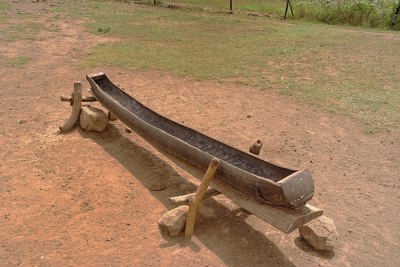
Tractor tyre trough for water for goats and sheep
This old tractor or truck tyre was somehow cut, opened up and sealed at either end to make a perfectly good livestock watering trough. Even Joy Adamson noted that the Masai question using modern appliances if home made ones do the job anyway.
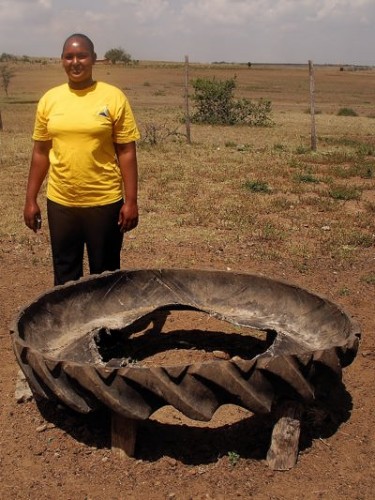
Tractor tyre cattle salt lick
Another way to make a salt lick, Evelyn just cut a truck tyre in half and placed it on the ground supported by stumps.
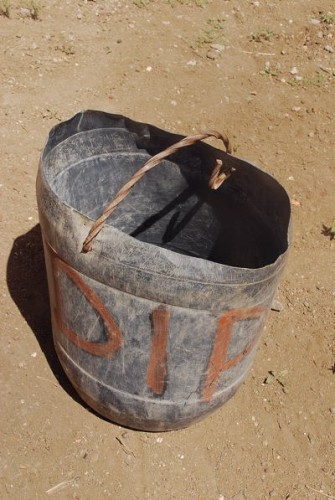
home made bucket works perfectly
Why buy a bucket when you can just make one with an old water container and a piece of metal?
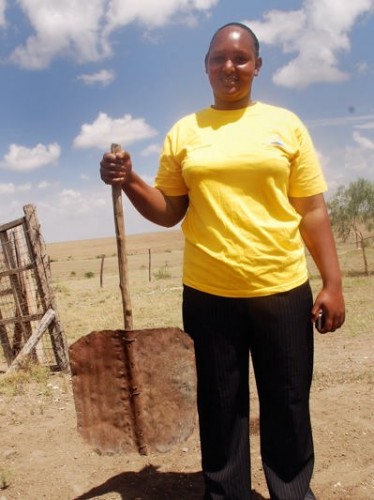
Home made shovel
And if you don’t have a shovel for your manure, just straighten out some corrugated iron, cut it and nail to a stick and Presto – probably more effective than anything you could buy in Nairobi. Manure is one of the few products sold to passing trucks on these remote ranches.
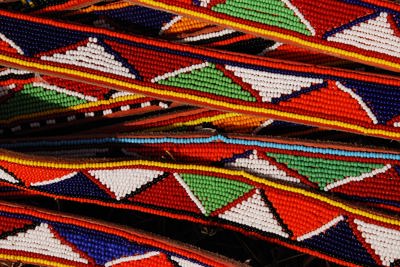
Keeping land open for wildlife migrations in and out of Nairobi National Park can be costly to those living with wildlife. Those in The Wildilfe Foundations land lease scheme earn 4$ per acre per year to keep the properties open (no fences) and to supplement their income they make beautiful beaded artworks for sale on Olerai Conservancy.
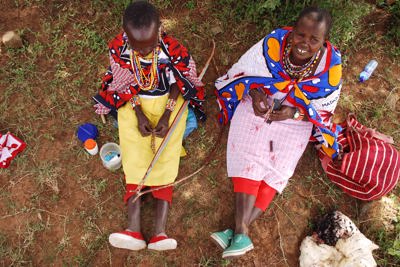
It might look like a tough life for some of us, but the Masai out here seem perfectly satisfied and at peace
Here’s another interesting idea from Dominic Wanjihia (see links to his other gadgets below) – the fuel efficient Sufuria. A sufuria is the aluminium pan that is used by virtually everyone in Kenya to make tea, ugali and for cooking vegetables. Like all pots that we use, energy is wasted around the sides of the pot. In Africa this is expensive as fuel be it gas, kerosene or charcoal is expensive. 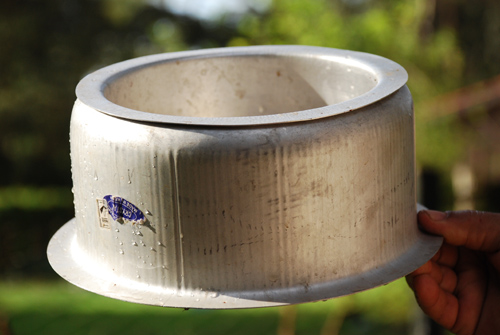
This is what it looks like when assembled
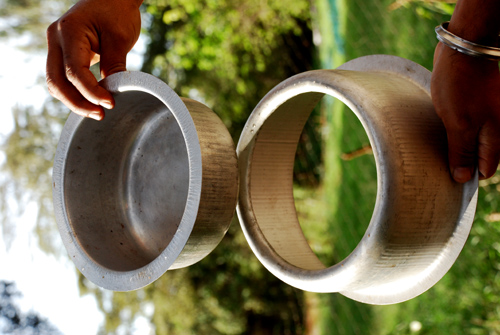
This is what it is comprised of – two sufurias to make one efficient one. Basically a hole is cut out of the bigger sufuria – and the piece cut out becomes the lid so nothing is wasted. To wash the sufuria you just dismantle the pieces by just slipping it out. The heat that otherwise escapes around the edge of the pan, is trapped between the cooking pot and it’s sleeve.
Though it’s not in production, Dominic is using this sufuria at home and swears that it saves at least 50-75% energy on a kerosene stove (his estimate is based on how long it’ takes to boil water).
So if you put a fuel efficient sufuria on a Kinyanjui fuel efficient stove I wonder how much energy saving you could achieve?
Dominic Wanjihia has been previously on Afrigadget showcasing his flat parabolic mirror, container garden, wearable Solar Panel vest, Food dryer, and camel milk cooler.
I love street food. Everywhere I go, from street markets in Russia, to back alleys of Beijing to side streets in Skopje, to the boulevards of Bamako, I make it a point to eat as many meals from roadside stands as possible. Ghana and Nigeria are no exception. In fact, I love me a MamaPut.
Its only where Mama herself is there to put more of her good eats on your plate, that I really feel I’m getting a good meal. Why? Because I can see ever step of its preparation, talk with the chief personally, and share the transcending bond of food with my fellow man and woman.
Now I wouldn’t call myself a street food expert – I’m not discerning enough for that title, but I am observant in the different styles of edibles vendors. In West Africa, I’m particularly impressed by the stock street food cooking apparatus. Simple, cheap, and recycled, I present to you the “Rim Stove”.
Using the steel rim off a car wheel as the basic starting point, three metal legs are wielded to the outside of the rim. Inside, a metal grate is added to the bottom to hold in the coals, and some form of pan or kettle stand is wielded to the top.
I’ve seen several variations on this theme, but the basics are always the same – the Rim Stove burns charcoal that’s been ignited in the middle of the rim, fed by air from the bottom and heating a cooking container sitting either on the pot stand or the coals themselves.
During on extending brainstorming session, I even tried to think of improvements to the Rim Stove – how it might burn hotter with less customization. My only solution? Make sure a Rim Stove is cooking chips for your fresh grilled fish.
This is a corn planter. It costs approximately $10 (15 Cedis) to make, and it significantly decreases the time that it would normally take to plant corn. This invention came about by taking a look a medical pill dispensing devices and transferring that knowledge to his communities needs.
Shamsudeen (“Sham”) Napara lives in the norther part of Ghana, which is a lot more rural and isolated than the southern part of the country where you find Accra, or the central part, where you find Kumasi. He has a metal fabrication shop where he builds tools, mostly for agricultural needs of those in the surrounding areas.
He was at Maker Faire Africa this weekend and I was completely amazed at both the ingenuity and the quality of his work.
That’s not all that Sham has been up to though, in fact, he’s been busy with a couple other projects. Specifically, he’s been working with Amy Herman from the Univesity of Indiana to figure out how to enhance traditional processes familiar to those in Norther Ghana. This means he does a lot with Shea nuts and the processing of them. It is one of the few fields dominated by the women in the community, and a lucrative business, since the processing from raw to refined can net a good margin of profit.
Below is a shea nut roaster – a small version, since the large ones are the size of a table. It costs around $40 (60 Cedi), and it decreases the time and energy normally expended in the work of getting the nuts ready for processing.
Though he has many more inventions in his workshop in Northern Ghana, the last of the three items that he brought to Accra was a soap cutter. It’s a device that has a hinge on one end that opens and closes with piano wires and guitar screws to hold wire tight across the device. As it is closed, it slices the soap cleanly.